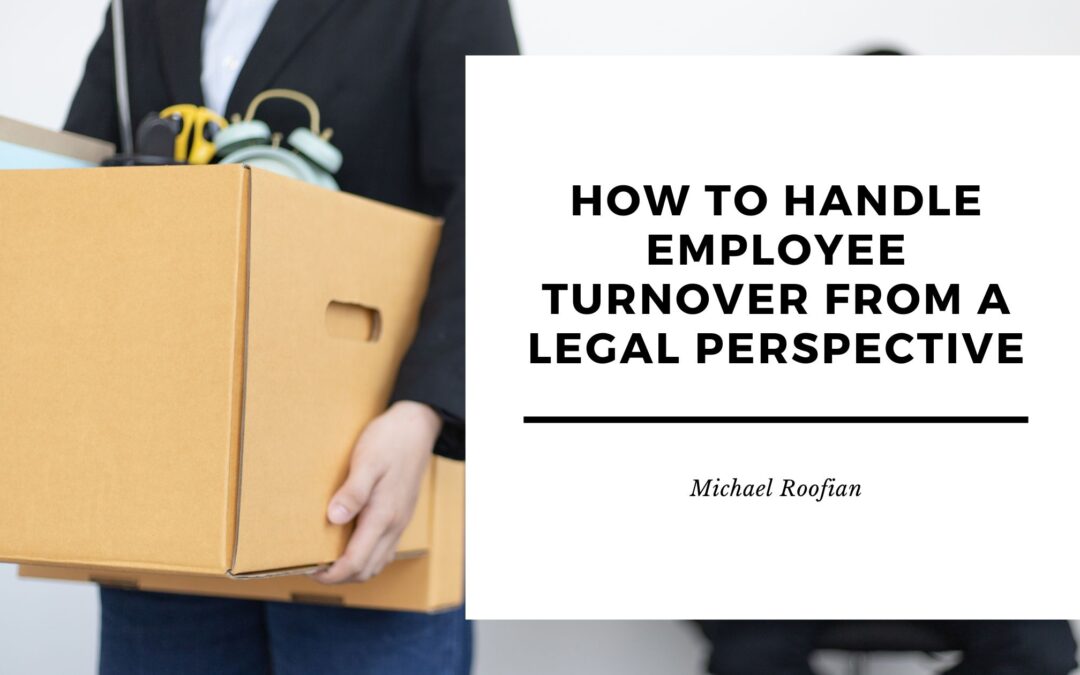Employee turnover is a common challenge for businesses, and handling it from a legal perspective is essential to mitigate risks and ensure compliance with employment laws. Here are key considerations employers should keep in mind when managing employee departures:
- Review Employment Contracts and Agreements
One of the first steps in addressing employee turnover is reviewing any existing employment contracts or agreements. These may include non-compete clauses, confidentiality agreements, or severance terms that dictate the legal obligations of both the employer and employee upon termination. It’s crucial to ensure that these agreements are in line with current labor laws and are enforceable in the jurisdiction where your business operates. For instance, some non-compete clauses may be deemed invalid if they are overly broad or restrictive. - Understand the Reason for Departure
The legal implications of employee turnover can vary depending on whether the departure is voluntary or involuntary. If an employee resigns voluntarily, the employer generally does not need to provide severance, but it’s still important to understand the reason for their departure. If the employee leaves due to issues like harassment, discrimination, or other illegal practices within the workplace, they may be entitled to certain legal protections, and the employer could face legal claims.
In cases of involuntary turnover, such as firing or layoffs, employers need to ensure that the termination is lawful and based on objective, documented performance-related issues. Wrongful termination lawsuits can arise if employees believe they were let go for discriminatory or retaliatory reasons.
- Comply with Wage and Hour Laws
Upon employee departure, it is essential to ensure that all wages and benefits owed are paid promptly. This includes final paychecks, unused vacation time, and other accrued benefits. Different states and countries have varying rules on when final paychecks must be issued and what must be included. Failing to comply with wage and hour laws can result in legal action or penalties. - Addressing Benefits and Entitlements
Employee benefits, such as health insurance, retirement plans, and stock options, are other important considerations during turnover. Employers should notify departing employees of their rights and options regarding benefits continuation, such as COBRA for U.S.-based employees. If the employee was enrolled in a retirement plan or stock option program, ensure that the appropriate steps are taken to transfer or liquidate these benefits according to the terms outlined in the plan documents. - Exit Interviews and Documentation
Conducting an exit interview can be an effective way to gain insight into why an employee is leaving, whether voluntarily or involuntarily. It also provides an opportunity to document any issues or disputes that could later arise in legal claims. Employers should document the details of the departure, including the reasons for leaving, any grievances raised, and the steps taken during the termination process to ensure everything is handled professionally and legally. - Manage Post-Employment Obligations
After an employee leaves, employers may still have obligations to protect their business. This includes enforcing non-disclosure or non-compete agreements if applicable, ensuring that the departing employee returns any company property, and preventing them from using proprietary information in their future roles.
In conclusion, handling employee turnover from a legal perspective requires careful attention to contracts, compliance with wage and benefit laws, and effective documentation of the process. By following these steps, businesses can minimize legal risks and ensure a smooth transition during employee departures.

